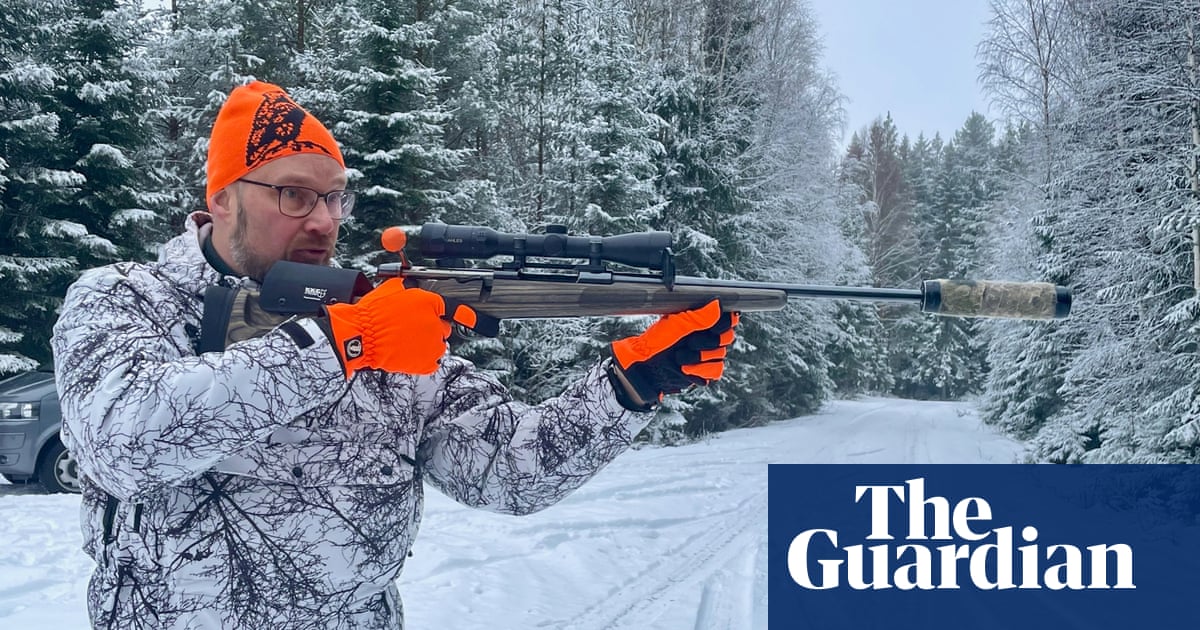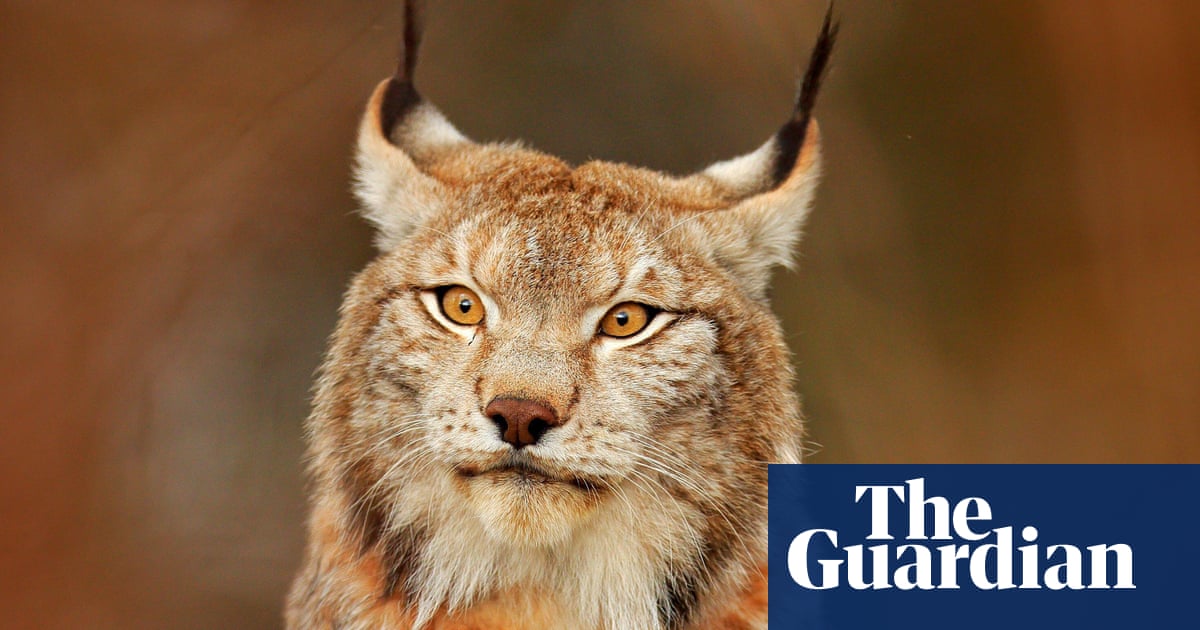
The biggest wolf cull in modern times has begun in Sweden as nature organisations warn it could drastically harm the population.
On Monday, the Guardian accompanied 200 hunters as they went to kill wolves in the frost-covered forests between Gävleborg and Dalarna, hunting from midnight until the sun set at 3pm. Groups will be going out across Sweden all month as they attempt to take down the large predators.
On Monday, the hunters surrounded areas where they knew the wolves had lairs. They released dogs, whose job was to search out the wolves and then drive them on a path towards the waiting hunters, but they had no luck, and the hunters went home empty-handed.
However, the dogs have now identified some of the lairs so the hunters will be able to move faster going forward.
Over the next month, hunters will be allowed to kill 75 wolves from a population of 460, as the government seeks to reduce the population density in certain districts.
“Hunting is absolutely necessary to slow the growth of wolves. The wolf pack is the largest we have had in modern times,” Gunnar Glöersen, predator manager at the Swedish Hunters’ Association, told local press as the hunt began on Monday.
But nature organisations have pointed out that the Swedish population of wolves is relatively low – in Italy there are more than 3,000.
They have appealed against the decision, which they argue breaks the Bern convention, but to no avail.
“You get discouraged. There is report after report that the wolf tribe has major problems, but [the government] don’t take it seriously,” said Daniel Ekblom, from the Nature Conservation Association’s wildlife management group in Gävleborg.
Marie Stegard, the president of the anti-hunting group Jaktkritikerna, said: “Wolves as top predators in the food chain are a prerequisite for biodiversity. Killing a quarter of the population through hunting has negative consequences for animals and nature. It’s disastrous for the entire ecosystem. The existence of wolves contributes to a richer animal and plant life. Human survival depends on healthy ecosystems.”
Anna-Caren Sätherberg, the Swedish rural affairs minister, recently told the public broadcaster SVT: “We see that the wolf population is growing every year and with this cull, we want to ensure that we can get down to the goal set by parliament.
“We can see that the level of conflict has increased, and that the level of acceptance has fallen,” Sätherberg said, adding that the government had asked the state environmental protection agency to look again at recommended population numbers.
The agency had previously recommended that the population should not fall below 300, to avoid it being further weakened and threatened by inbreeding. However, a majority in the Swedish parliament is in favour of cutting the wolf population to 170 individuals, at the very bottom of the 170 to 270 range that would allow the country to meet the conservation requirements of the EU’s species and habitats directive.
Hunting is a hot political topic in Sweden, with a powerful lobby able to influence politicians into allowing more animals to be killed. Stegard added: “It is obvious that there is a strong political pressure for licensed hunting for wolves, and also lynx and bear.
“There is a large majority of Swedes who like wolves, even where they live. In our opinion the reason for these hunts are simply that there is a demand for shooting wolves among hunters. The hunters’ organisations have enormous power in Sweden. It is a fact that the Swedish parliament has a hunters’ club open to members of all parties, with a shooting gallery underneath the parliament. This sounds like a joke but it’s absolutely true.”
A group of scientists from top European universities recently wrote to the journal Science, arguing that scientific advice for this goal had not been sought and that it would threaten an already fragmented and fragile population.
Benny Gäfwert, a predator expert at the WWF, said the parliament’s figure of 170 was “not based on any scientific facts”.
“Unforeseen things can happen in wild populations and a level of 170 is far too low,” he told SVT. “We have a problem when it comes to the genetics of wolves, and the smaller the wolf population, the greater the impact of fluctuations in genetic status.”
Norway shares a wolf population with Sweden along its border, which poses further threats to the endangered predator. Norway and Sweden’s wolf population – the Scandinavian wolf – is on the endangered species list and are categorised as critically endangered in Norway and severely endangered in Sweden. Norway’s government has put in place a very restrictive wolf management policy with a fixed population target of only four to six pups every year. As far as it is known, Norway is the only country in the world that sets a maximum target number for a critically endangered species. It allows hunters to drastically reduce the wolf population each year. This extra pressure from the Swedish government, nature campaigners argue, could further imperil the species.
Campaigners in Norway are fighting the decision to allow such a large cull in court, and there is a hearing next week which they hope to win. If they do, it could have ramifications in Sweden, which is governed by the same European laws.
The nature group Aktivt Rovdyrvern (ARV) said: “Population genetics has shown that to maintain a viable population you need to have approximately 1,500 individuals with genetic variation. Sweden and Norway currently have about 400 wolves but this seems destined to be reduced to about 200 individuals in total with 170 of them in Sweden and the remaining 30 in Norway. This is incompatible with establishing and strengthening a viable population of wolves on the Scandinavian peninsula both in the short and the long term.”
The Swedish government has been contacted for comment.











